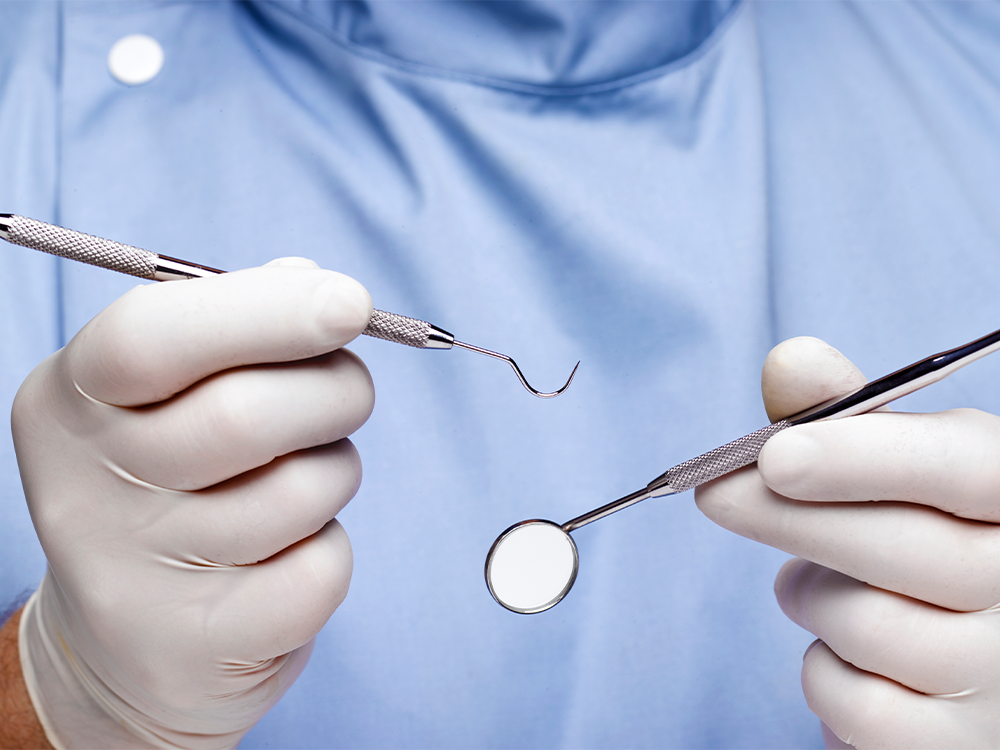When it’s time to unlock your smile’s potential, you need to start with your dental health. But with a vast array of options, how do you know what’s right for you? We spoke with expert cosmetic dentists to break down the differences between some of the most common options for dental work: implants, crowns and bridges.
According to the CDC, tooth decay and tooth loss are both common issues for Americans. By age 50, Americans have lost 8 adult teeth on average, not including wisdom teeth. By age 70, a quarter of U.S. adults will have lost all their teeth.
When you’re experiencing tooth decay or loss, acting quickly will help preserve the rest of your teeth and the overall health of your mouth.
Crowning Glory: Dental Crowns
When you receive dental work, your dentist is always going to try and preserve your teeth, rather than removing them. Dental crowns are a key player in that process, as they can be attached to a problem tooth to stop the decay process.
Huntsville, AL cosmetic dentist Sonya L. Wintzell, DMD, explains using a crown helps protect the integrity of your tooth, rather than allowing the decay to continue. “A crown is a wonderful option to repair or replace missing or weak tooth structure,” Dr. Wintzell says. “It allows the patient to keep a tooth for a very long time as opposed to slowly letting the tooth break down to the point it needs to be removed.”
Crowns can stop decay where it is, allowing the remaining tooth to be preserved.
New York cosmetic dentist, Husam Almunajed, DDS explains that crowns work best when they’re preserving a mostly compromised tooth. “For crowns, they are designed to be a full-coverage restoration to protect the tooth,” Dr. Almunajed says. “A crown is a great dental restoration if more than 65 percent of the tooth structure is compromised, missing or fractured. “
When only a little bit of your tooth is compromised, you’ll likely be recommended a filling.
“Minor damage can usually be repaired with a cosmetic filling,” Dr. Wintzell explains. “But if sufficient tooth structure is compromised a crown can be the best option.”
According to Houston, TX cosmetic dentist Guy M. Lewis, DDS, crowns can also be an option to repair cracked teeth and even for purely cosmetic improvements. “Crowns can strengthen weak or damaged teeth, including cracked tooth repair and broken tooth restoration,” Dr. Lewis explains. “You can also have a crown for discolored teeth, a general cosmetic improvement or even to reshape teeth with crowns.”
A lot of patients opt for porcelain crowns for their dental work, because they more closely mimic the look of teeth, though metal options are still available. “We now have beautiful materials that allow the lab to shape the crown to mimic nature and the tooth that is being repaired in a way that only your dentist knows it is a crown,” Dr. Winztell explains.
Standing Strong: Dental Implants
When you’re missing one or more teeth, a dental implant acts as a new, rooted-in tooth. “Implants are really synthetic roots of teeth that are placed surgically in your bones,” Dr. Almunajed explains. Because they closely mimic not just the look, but functionality of a real tooth, they are considered the pinnacle of tooth restoration.
“An implant is the ultimate restoration when missing a tooth,” Dr. Wintzell explains. “The implant is surgically placed into the jawbone and mimics the root of the tooth that is missing. A crown is then placed on top of the implant and looks and functions just like the original tooth.”
Implants can be used as the basis for a crown or even a full set of dentures.
“Dental implants are artificial structures, typically made of titanium, that replace the roots of teeth and support crowns, bridges, or dentures,” Dr. Lewis says. “Their purpose is to act as a foundation for artificial teeth that look, feel, and function like natural teeth, thus restoring a patient’s ability to speak, eat and chew properly.”
With the right care, they can also last a long time. “Implants have great longevity and also help support the bone around the implant area,” Dr. Wintzell explains. “Whether missing one tooth or a full set of teeth, implants can help the patient feel and look like their old self again with confidence in their smile and eating ability.”
Mind the Gap: The Dental Bridge
Made up of crowns that fit over existing teeth and artificial teeth to ‘bridge the gap,’ a dental bridge corrects missing teeth without implanting anything into your bone. This approach to dental health allows patients who would otherwise not be candidates for a dental implant to receive long-lasting restoration.
“Bridges can be a great option when there is bone and/or gum aesthetic concerns, or impacted teeth that may be in the way of implants,” Dr. Almunajed explains.
According to Dr. Wintzell, bridges have been a common choice for dental work for a long time. “Although implants are the ultimate restoration when missing a tooth, a bridge can be another successful option to replace a tooth,” Dr. Wintzell explains. “Bridges have been used successfully in dentistry way before implants became prevalent.”
Bridges are designed to restore both the aesthetic look of teeth, but also their long-term functionality.
“Designed to bridge the gap between missing teeth, this innovative solution restores not only your confidence but also your ability to chew and speak naturally,” Dr. Lewis says. “Crafted with precision and durability, our dental bridges are custom-made to seamlessly blend with your natural teeth.”
Sometimes, patients prefer this option simply for the lack of surgery in their dental work. “Implants being more surgical in nature tend to take longer to get to the end result,” Dr. Wintzell explains. “And just the fact that there is surgery involved can make a patient deter from this option.”
The biggest reason a dentist may prefer a bridge over an implant has to do with your jawbone.
“One reason a dentist may recommend a dental bridge is if the patient has insufficient bone density in the jaw to support a dental implant,” Dr. Lewis explains. “Another reason could be if the patient has multiple missing teeth or a gap between the teeth that are not next to each other, as bridges can cover more extensive gaps compared to implants.”

















